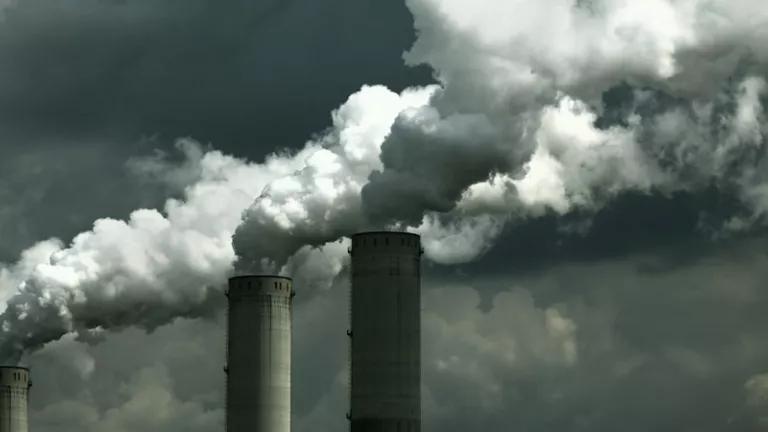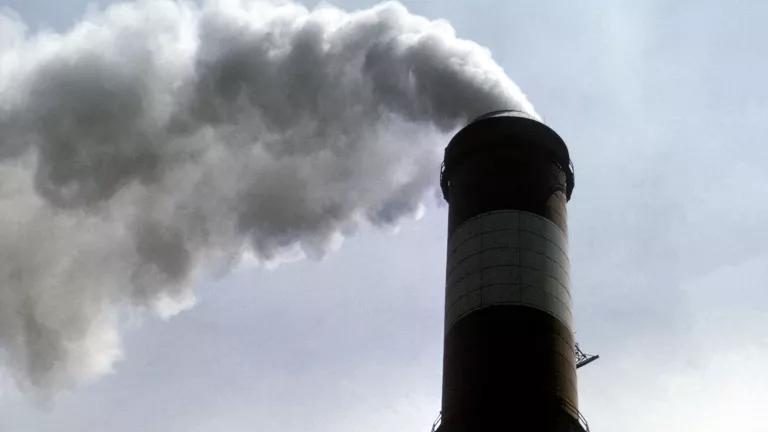The Coal and Nuclear Bailout Memo: Recycled Idea, New Hat!

The Trump Administration has made no secret of its desire to prop up coal and nuclear plants for political purposes and today the White House made it abundantly clear. At the same time, a leaked draft memo unveiled last night repackages a previously rejected idea to bail out coal and nuclear plants, this time arguing that they are needed to protect national security. The memo proposes that the U.S. Department of Energy (DOE) issue an order requiring electricity grid operators to purchase, for two years, electricity from expensive and uncompetitive coal and nuclear facilities that would otherwise retire.
Neither the White House nor DOE have owned up to the memo or its contents. But White House Press Secretary Sarah Huckabee Sanders stated today that stopping coal and nuclear retirements remains a priority for President Trump, and that he has directed DOE Secretary Rick Perry “to prepare immediate steps to stop the loss of these resources, and looks forward to his recommendations.”
If DOE chooses to undertake the actions outlined in the memo, it would be an insult to true national security needs, America’s electricity customers and markets, and the Federal Regulatory Energy Commission (FERC).
A slap in the face to FERC
Last September, DOE asked FERC to bail out coal and nuclear plants under the premise that doing so was necessary to ensure grid resilience. DOE used the Federal Power Act (FPA) as its legal support.
A Republican-led FERC, with four Trump Administration appointees, unanimously rejected the proposal on January 8 as illegal. FERC agreed, however, to further study grid resilience. That study is ongoing, but the overwhelming response thus far is that the grid is already resilient—without bailouts for coal and nuclear generation.
The leaked memo states that while DOE supports FERC’s research, DOE is “compelled” to jump ahead of FERC to “safeguard ... our national defense and to maximize domestic energy supplies.”
In other words, even though FERC rejected DOE’s last attempt to bail out coal and nuclear power plants, DOE should do it anyway.
The new proposed bailout rationale: national security
Since FERC already concluded that DOE couldn’t justify coal and nuclear subsidies purely under the guise of resilience, coal and nuclear bailout supporters needed a new angle. The leaked memo explicitly acknowledges in the first sentence that the grid is resilient today.
Enter national security—a patriotic-sounding buzzword apparently used by the Trump Administration and its supporters when they are out of ideas.
The energy world has speculated for weeks that DOE might use national security as its latest ploy, but this is the first time that we’ve seen these ideas outlined in a memo. The memo uses the obscure and seldom-invoked Defense Production Act (DPA) as the legal justification for an industry bailout.
But just like the FPA, the DPA doesn’t legally support a bailout for coal and nuclear.
The DPA, passed in the aftermath of World War II, is meant to “ensure the vitality of the domestic industrial base.” In 1980, Congress amended the DPA to include energy as a “strategic and critical material.” While the DPA enables a president to deem certain contracts necessary for national security or national defense, it does not give the president the power to set the mandatory pricing of fuels or electricity.
As the memo notes, DOE used the DPA in January 2001 during the California energy crisis. Then, outgoing DOE Secretary Bill Richardson issued a temporary emergency order under the DPA requiring 27 energy suppliers to provide Pacific Gas & Electric (PG&E) gas after the utility claimed that six of its suppliers had either stopped or were threatening to halt deliveries because of PG&E’s financial woes. The order required certain existing gas suppliers to continue to sell natural gas to PG&E under the previous terms. The order was set to expire on January 24, 2001.
On January 23, 2001, new DOE Secretary Spencer Abraham extended the order by two weeks upon the explicit request of then-California Governor Gray Davis. After the two-week extension, the men agreed the emergency was over and no further extensions were necessary.
Here, there is no energy crisis, nor is there any request by a governor or grid operator to help a utility or power producer. In fact, PJM, the nation’s largest grid operator located in the heart of coal country, stated today that “there is no need" for the “drastic action” outlined in the memo.
The leaked memo also suggests the creation of a “Strategic Electric Generation Reserve”—ignoring that grids already have reserve margins of electricity capacity to ensure grid resilience, with PJM’s typically hovering between 20 and 30 percent.
Plus, we’re not talking about a stopgap measure for two weeks, but two years of bailouts nationwide, which will cost U.S. consumers billions of dollars.
Most critically, under the DPA, there must be some demonstrated scarcity or national security need. Incredibly, the 40-page single-spaced leaked memo fails to identify a single valid justification under the DPA.
To the contrary, a bailout would harm national security by undermining DOE’s ability to act during times of true crisis. Crying wolf is bad national security policy that would jeopardize reliability. It wrongly shifts the focus away from steps that would improve the safety and security of our grid.
Real progress could be made on defending against power grid hackers and other cyberthreats, a threat DOE itself has acknowledged is significant, or by addressing the ongoing and real grid emergency in Puerto Rico.
The memo is typical of an Administration that has exercised executive authority to appease political supporters, despite legitimate concerns about an action’s legality.
A bailout hurts markets and customers
The reason why many coal and nuclear plants are failing is because they’re expensive compared to other energy sources. This is economics 101. Markets prefer the cheaper, better alternative. But the plan outlined in the memo would interfere with markets and force grid operators to buy costlier energy resources from coal and nuclear power plants, all the while increasing customer costs and—at least in the case of coal—carbon emissions.
Additionally, when energy prices increase, ordinary customers pay the price. It is critical, then, that any such move help customers. Alison Silverstein, a renowned economist who has worked as an energy advisor at FERC and DOE, outlined this concept in a report last month.
But under the plan in the memo, customers would be sold the exact same services, at higher prices – and without any demonstrated emergency or national security crisis.
It’s the same doll, but with a new hat!
There’s a classic Simpsons episode where Lisa Simpson challenges a toy company’s release of a sexist doll. The company responds by releasing the exact same doll, but with a new hat. To Lisa’s dismay, her friends fall for the ploy and buy the “new” doll.
So far, everyone (except for the coal and nuclear industry) seems to realize that this is the same doll, but with a new hat. The memo already has made strange bedfellows, with the oil industry joining with the solar and wind industries to condemn the proposal.
But this shouldn’t be surprising.
After all, that's what happens when a proposal is so blatantly unjustified in law or fact.
This blog provides general information, not legal advice. If you need legal help, please consult a lawyer in your state.




